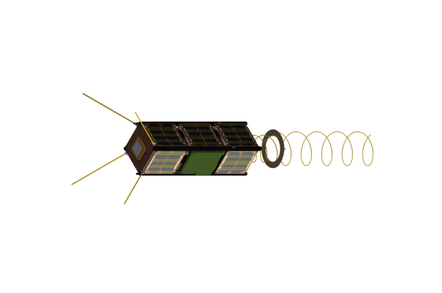Shoebox-sized satellite enters orbit packing 3Mbps radio
Humanity's nano-sat swarm is taking shape in mere months

The European Space Agency is congratulating itself for getting a satellite off the drawing board and into space in a single year.
The satellite in question is GomX-X3, a “cubesat” that, at10cm x 10cm x 30cm, more closely resembles a shoebox than a cube.
The craft has several intriguing payloads, namely:
- A software-defined radio (receiver), which is tuned to receive L-band signals This payload's programmability makes the satellite impressively flexible as it can be reconfigured for different roles;
- An automatic dependent surveillance-broadcast (ADS-B) receiver that receives satellite navigation signals from airplanes.
- A reaction wheel system that allows the satellite to turn, the better to aim its antennae, merely by rotating wheels inside the vessel. The reaction wheels draw from the craft's solar power, rather than relying on propellent;
- An X-band transmitter that tests the possibility to send data to and from cubesats at 3 Mbps.
One of the things the ESA hopes its cubesat efforts will show is how small satellites can assume roles that today require large, expensive and hard-to-build craft. GomX-X3 took just a year to go aloft after receiving approval. Lots of small, cheap, satellites that offer functionality comparable to bigger birds have obvious potential to realise even more of the benefits of being in space. Little wonder ESA cubesat chief Roger Walker has declared himself “very pleased with the rapid progress made during the first few days in orbit”. ®








 User Center
User Center My Training Class
My Training Class Feedback
Feedback











